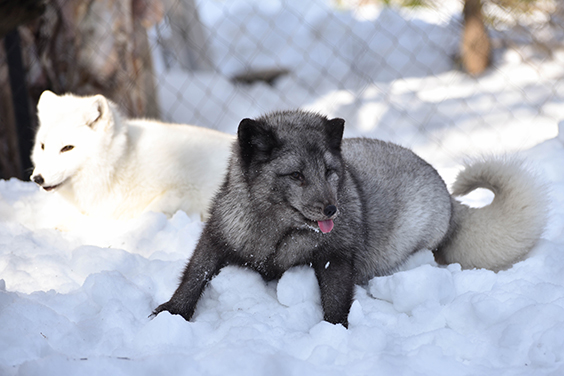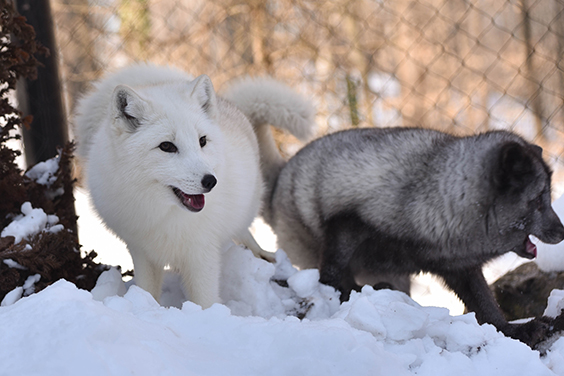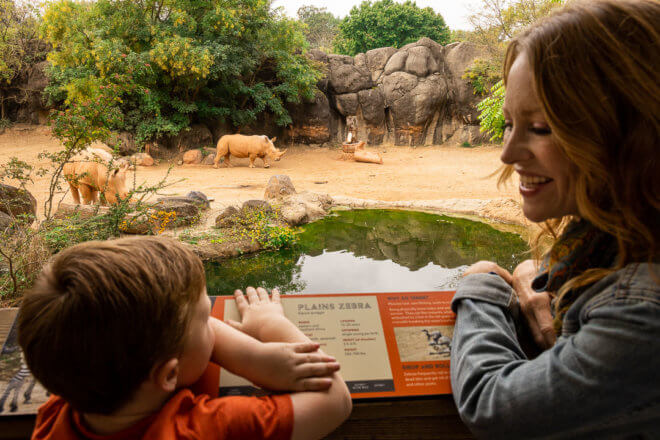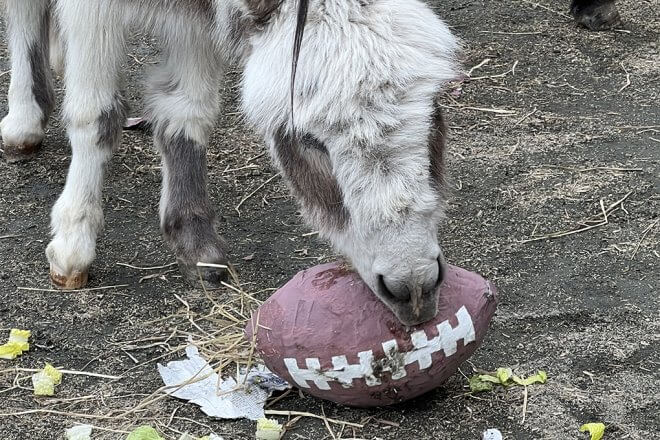The Maryland Zoo in Baltimore is thrilled to announce the addition of two young Arctic fox to the Polar Bear Watch section of the Zoo. The foxes, both eight-months-old, made their debut this morning much to the delight of Zoo staff and volunteers. “Timber and Luna just completed quarantine at the Zoo hospital and have spent the last few days becoming acclimated to their new exhibit home,” stated Carey Ricciardone, mammal collection and conservation manager. “So far they have been very active, exploring every nook and cranny of the exhibit and interacting well with one another.”

The Arctic fox is found throughout the entire Arctic tundra including Alaska, Canada, Greenland, Russia, Norway, Scandinavia, and even Iceland, where it is the only native land mammal. They are also the only land mammal to venture as far north as the polar bear. They are active and opportunistic predators during the warmer months when they are camouflaged by their short, brownish-gray summer coats. They will hunt, steal, and scavenge fish, crustaceans, birds, bird eggs, and the main staple of their diet, lemmings. They are in constant food-gathering mode for themselves and their pups. Arctic foxes have also been known to cache food for winter.
When the cold sets in again, Arctic foxes transform into completely different looking animals. The brownish summer coats give way to the bright white winter coats that helps them warm during the long, dark, freezing Arctic winter. The Arctic fox winter coat is the most dense and warmest of any land mammal. Fur covers every part of their bodies, including the soles of their feet. This helps them retain body heat, as do their small ears and small snout. They use their bushy tails as muffs to keep their noses warm when they curl up. Fully grown they can weigh between seven and seventeen pounds with females being slightly smaller than males.
The Maryland Zoo has housed this popular species in various exhibits since 1975, moving them to Polar Bear Watch in 2004. “We are pleased to have these two fox at the Zoo just in time for the cold February weather,” continued Ricciardone. “They will bring a lot of excitement to Polar Bear Watch, especially when they race around in the snow.”






Share this article